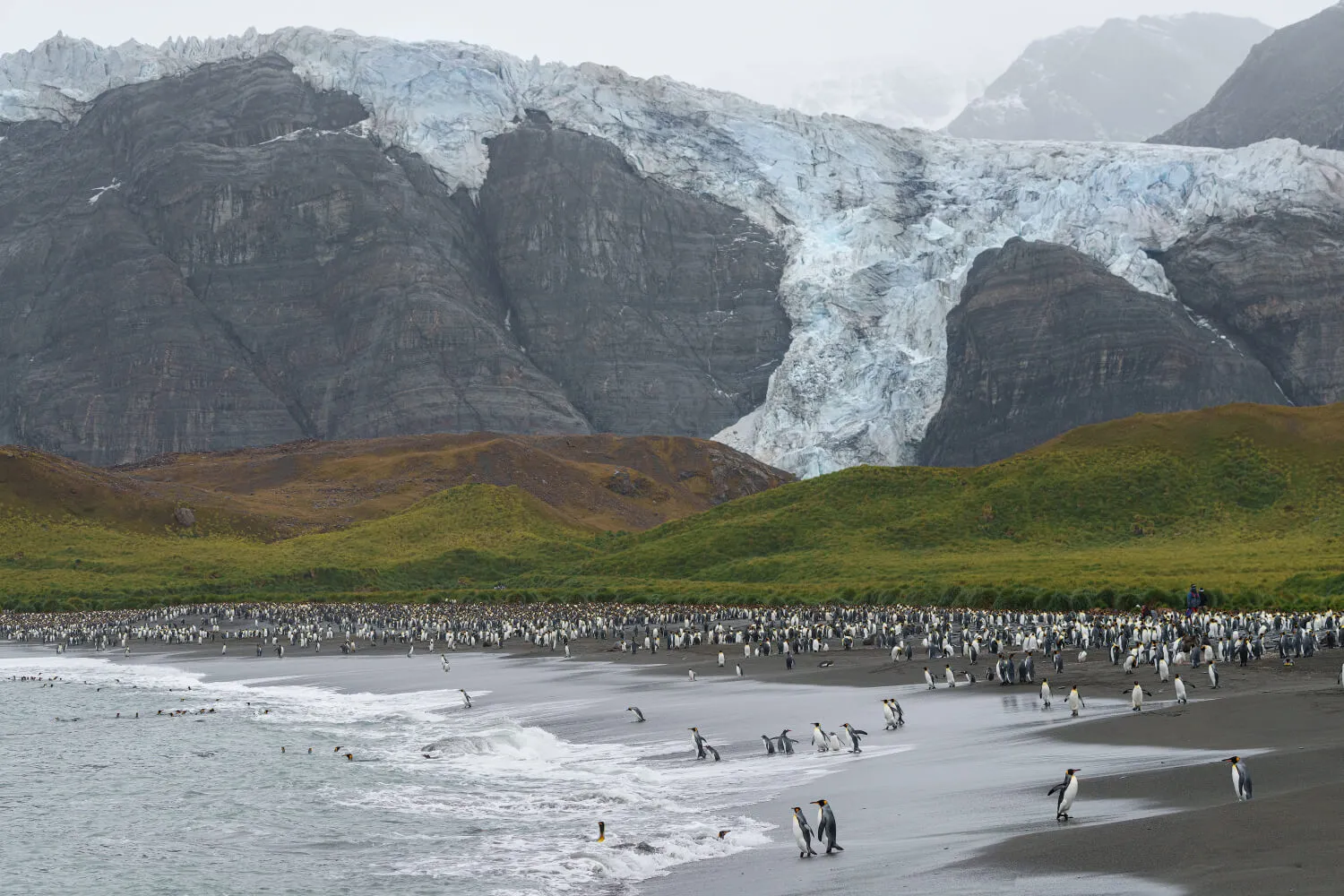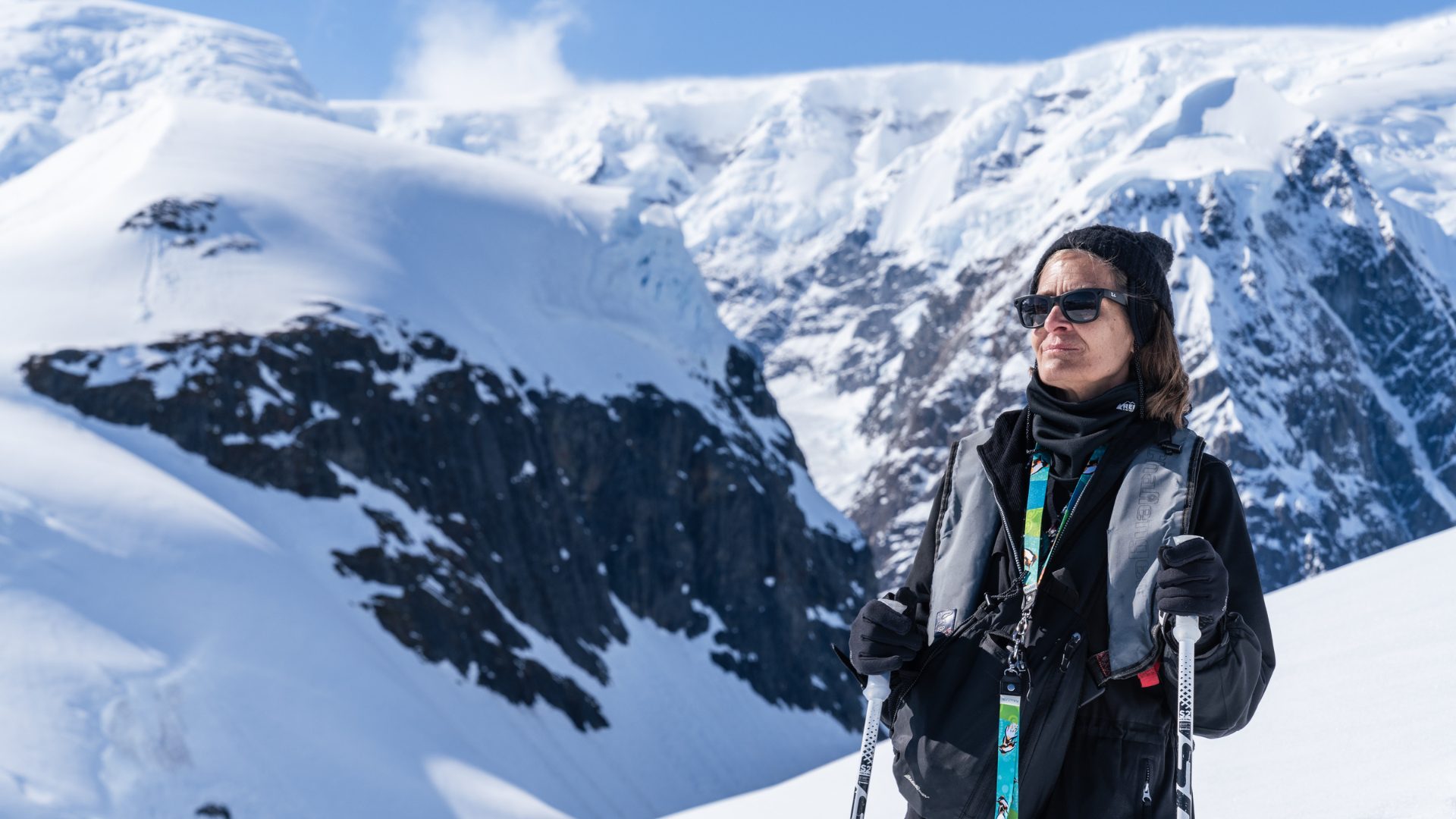

In an effort to share her research about climate change in Antarctica with travelers, Allison developed the FjordPhyto Antarctic Citizen Science Project in partnership with Dr. Maria Vernet. Through the program, Antarctic travelers participate in collecting data that will contribute to our greater scientific understanding of climate change in Antarctica and how a changing climate impacts ecosystems along the peninsula.On the occasion of International Women's Day, we discussed Allison's work and her passion for Antarctica.
How long have you been involved in responsible tourism?
At the age of 15, I started traveling in a small footprint way, mostly backpacking and self-guiding when possible. Ten years ago, I visited the Amazon jungle with a Peruvian ecotourism company, and that is when I really became aware of what responsible tourism could be. In 2013, I learned of the International Association of Antarctica Tour Operators (IAATO) and the responsible tourism efforts of its members, including Antarctica21. In early 2017, I became involved directly.
How many days have you spent south of 60?
Eighty-one days. My first visit to Antarctica was as a Research Scientist aboard the U.S. R/V Nathaniel B Palmer in the Ross Sea for 53 days. My second visit was as a guest scientist with Antarctica21 aboard the M/V Hebridean Sky, conducting the Citizen Science Project FjordPhyto with travelers along the Antarctic Peninsula for 28 days.

What has been your' defining moment'?
I suppose I have two defining Antarctic moments—the first in 2013 when my former boss asked if I would go on a research cruise. I had never been to sea before, but because of my love of travel and desire to visit the Seventh Continent, I immediately said yes. Those 53 days at sea were unforgettable. I felt like I was on another planet. There I decided, as a scientist, that if I were to ever go to graduate school, it would be to study biology in Antarctica. Three years later, I did just that.My second was in 2016, the day I accepted admission to the Master's Degree in Marine Biodiversity and Conservation program at Scripps Institution of Oceanography (SIO) at UC San Diego. I had been a research technician for 10 years prior, mixing lab work with fieldwork on various environmental projects. I loved the work I did in the lab, but I didn't often get into the field as much as I wished. So, I would spend my vacations looking for projects where I could travel and not just be a tourist but help on a science project as a "voluntourist."I knew Antarctica as a continent set aside for peace and science, hosting around 4,000 researchers during the Austral summer. When I learned that the continent received tens of thousands more tourists, I wondered if I could find a way to engage the IAATO community in that scientific legacy.I partnered with polar phytoplankton researcher Dr. Maria Vernet, and we developed the Citizen Science program FjordPhyto, with support from the National Science Foundation. As visitors ride to the landing site in a Zodiac, polar guides explain how melting glacial ice contributes freshwater to the marine fjord ecosystem. This alteration of the marine environment influences the community of species, beginning with phytoplankton at the base of the food web. Visitors then have the opportunity to measure these changes and collect samples to help us understand these poorly monitored coastal fjords.In December 2017, Antarctica21 invited me to be a guest scientist on board and see this project in action. It has been an absolute joy to work with Antarctica21 and the IAATO community and to see the travelers involved in my research about climate change in Antarctica. These samples are now contributing to my thesis work. I want to thank all of our partners for their efforts in launching this Citizen Science Project.

What does International Women's Day mean to you?
I am glad that communities come together to celebrate women's achievements and remember the struggles women have had (and still have). Women make up 50% of the human population; it seems evident they should have the same rights and opportunities as men.
How have things changed for women in the polar fields since you first joined?
I first joined the polar field in 2013, so I'm still relatively new! Today, 55% of the Association of Polar Early Career Scientists (APECS) are female. It is mind-boggling to think that in the 1950s, women were banned from coming to Antarctica. In 2016, the Scientific Committee on Antarctic Research (SCAR) organized an event to celebrate the Women in Antarctic Research. I helped with this effort, and as a team, we created over 150 biographies of female Antarctic researchers and launched more than 100 Wikipedia pages to raise the visible profiles of female role models for early-career scientists.
What would you say to young girls with ambitions to work in Antarctic science and tourism?
Make it happen! Learn about the industry, learn about and meet the women working there. The women I've met who work in Antarctic tourism have strong spirits, practical hands-on skills, good people skills, and are adventurous. They do what they love. I also think women tend to be a little more concerned about making relationships work. At least from the young field scientists I've mentored and from my colleagues, I've been asked that question several times. ''If you're traveling all the time, how can you possibly have a partner at home?'' I still haven't figured that one out, but I would say just do what you love, and the rest will work itself out.
What small change could we all make to protect the continent better?
The continent's greatest threat is global warming and climate change. The Antarctic Peninsula is the fastest-warming region in the world, and the polar regions in general experience more rapid and severe change compared to other places on Earth.Climate change in Antarctica may seem remote and out of sight, but it contributes to huge global processes in the atmosphere and the oceans. Everything we do back at home matters in the collective bigger picture. If you can educate yourself on the issues, look into the current research (see The Fifth Assessment Report of the United Nations Intergovernmental Panel on Climate Change) and start making any small changes, do it.How can you have a smaller energy footprint in your daily life? How can you get involved in environmentally friendly causes? Can you influence your politicians in these matters? Can you innovate your business, businesses you work for or develop new technology? Can you educate the younger generations? All of these small actions add up to significant change. Just start somewhere.To learn more about our trips and educational programs, contact us today!
Start planning your next big adventure today! Review our limited-time promotions.
Related Articles
Experience the Extraordinary
From dramatic landscapes to close wildlife encounters, every journey to the White Continent is unique. Let's start planning yours together.











.avif)
_INT0328.avif)

.jpg)
.png)

